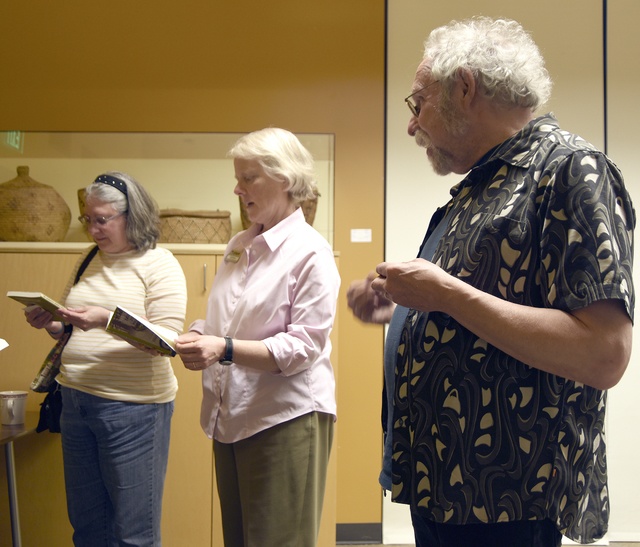Sasquatch doesn’t appear every day, but at least 45 people claim to have seen, smelled or heard some signs of the creature in King County in the past 46 years, according to the Bigfoot Field Research Organization (www.bfro.net).
The most recent sighting, in 2014, was in Bellevue, but the reports also came from Maple Valley, Enumclaw, Grass Mountain, Issaquah, Duvall, Carnation, Rattlesnake Lake and all around Snoqualmie and North Bend.
Maybe the witnesses were all mistaken and there is no Bigfoot. It hardly matters.
“Regardless of whether you believe in Sasquatch or not, it’s become an icon for the Northwest,” said David George Gordon, author of the “Sasquatch Seeker’s Field Manual.”
The creature appears on countless state souvenirs and is the subject of dozens of books. There’s a law in Skamania County — which had the second most reported Sasquatch sightings on BFRO.net — against harming a Sasquatch, Gordon said and the creature even appears in the U.S. Army Corps of Engineers’ 1975 Washington Environmental Atlas.
Gordon said the caveat-loaded text describes it as “an ape-like creature, standing between 8 and 12 feet tall, weighing about 1,000 pounds, covered with long hair, very agile and powerful.”
Speaking at a program April 7 at the Carnation Library, Gordon said this description fits that of many people who say they’ve seen Sasquatch.
For the record, Gordon does not claim to be a Sasquatch expert, although he’s talked to several. He calls himself “a fence sitter” on the whole question, not convinced that the creatures do or don’t exist. He’s never seen one; he’s keeping an open mind.
“Absence of evidence is not evidence of absence,” he said, quoting astronomer Carl Sagan. Then he added, “but I wouldn’t go to court with some of this sloppy evidence.”
A glimpse through trees, a bad smell, strange sounds, huge footprints are all elements of the “sightings” that have been reported, but so far none, not even the famed 1967 Patterson-Gimlin film, a few seconds of 16mm footage of one of the creatures, have been verified.
That could just be a matter of time.
In his book, and in his presentation, Gordon proposes that and describes how Sasquatch seekers can become “citizen scientists,” observing and collecting as much data as they can, then following a scientific process for documenting and reporting a discovery, big-footed or not, for professional scientists to analyze.
Citizen scientists were the first scientists.
“Up until the 1800s, no one was a professional scientist,” Gordon said. “They all had day jobs.”
Mysteries and monsters have disappeared over the years as science started to explain our world, he said, particularly in cryptozoology, or “the study of hidden animals.”
“The cryptid (hidden animal) of yesteryear could be the zoo animal of today,” he said.
The field manual is Gordon’s second book on Sasquatch; he’s also written about slugs, oysters, cockroaches, tropical fish and an entire cookbook of insect recipes. However, it’s his first to be published by Mountaineer Books, better known for their practical how-to guides.
Essentially, that’s what the field manual is, a how-to guide, not for people who want to find Sasquatch, but for those who, if they do, can prove it.
It takes a lot of work, though, Gordon warns.
“If you’re going to be a citizen scientist, you have to be good at taking notes,” he sighed. You’re also going to want help, so bring a notebook, a camera and a friend when you trek into the woods in search of Bigfoot.
“Even if you don’t see the slightest traces of a Sasquatch, you’re going to be fully attuned to what you do see,” Gordon said.
For more, visit www.davidgeorgegordon.com.


